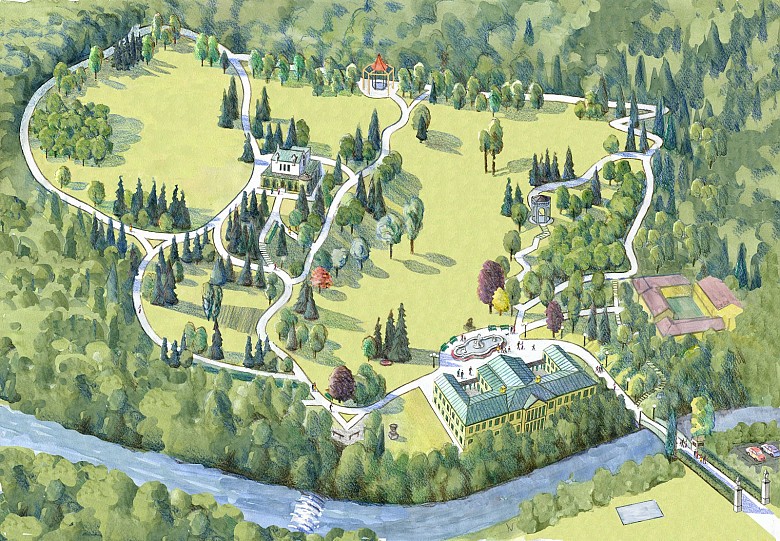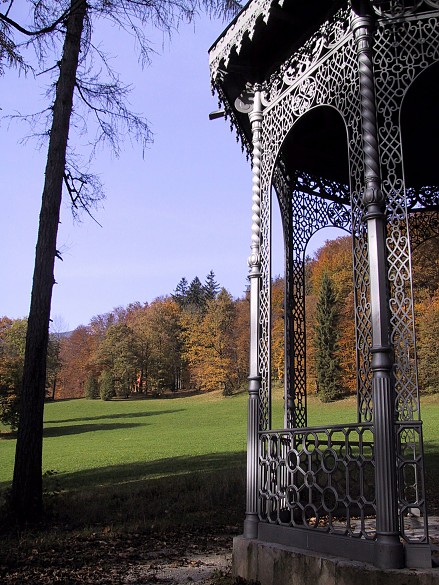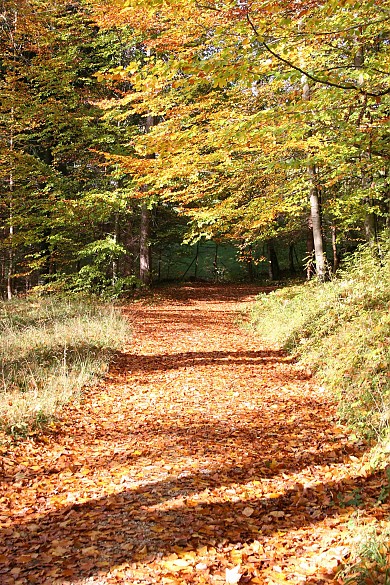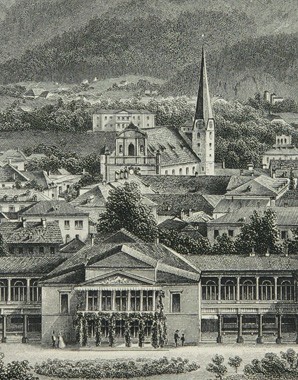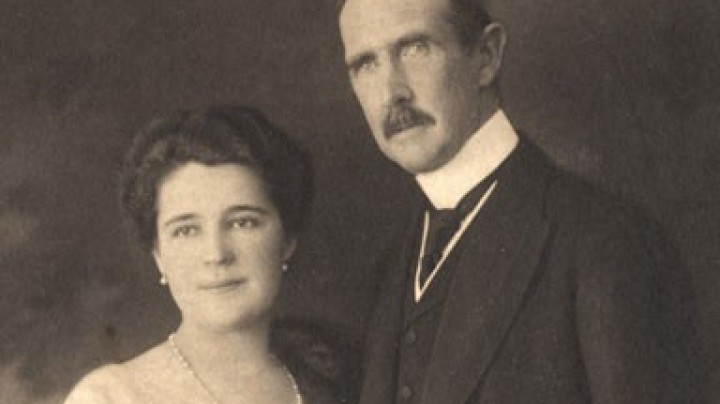Following in Sisi’s footsteps: the imperial park at Bad Ischl
The visitor can gain an authentic impression of the lifestyle of Emperor Franz Joseph and Empress Elisabeth not only from the interior of the imperial villa at Ischl but also from the park surrounding the emperor’s favourite summer residence.,
From the middle of the 1850s, while the villa was being remodelled and extended as an imperial summer residence, neighbouring pieces of land were successively purchased in order to enlarge the park. The design of the imperial park at Ischl was entrusted to Court Gardener Franz Rauch. It was laid out in the style of an English landscape garden, with winding paths and picturesquely composed groups of trees. The natural stands of trees were complemented with plantings of exotic species.
Rauch was also responsible for designing the ‘Cottage’, a summer house in Tudor Gothic style. Britain was at the forefront of fashion in garden design at the time, and here the Habsburgs took a break as it were from the Neorococo style otherwise favoured at the Viennese court. The Cottage is also referred to as the ‘Marble Palace’ on account of its unpainted pinkish-grey marble façade.
The Cottage served Elisabeth as a retreat: the filigree veranda surrounding most of the building and covered in luxuriant creepers offers fine views of the park. The interior fulfils the promise of the precious façade: ornate wooden carving complements the intarsia parquet floors. The furnishings draw on motifs from the Nibelung Saga, in harmony with the medieval atmosphere created by the architecture.
After the building work was completed in 1861 the now 22-year-old Elisabeth made frequent visits to Ischl, spending several weeks there almost every summer from 1865 to her death in 1898. Preferably in the early morning, the empress walked to the top of the 800m high Jainzenberg, which belonged to the park of the imperial villa and whose summit affords magnificent views down into the valley and of the peaks in the surrounding area.
The close ties between the imperial family and Ischl are also reflected in the garden of the villa: the ‘Engagement Pavilion’, a lightweight iron construction in Moorish style, for example, recalls the wedding of the imperial couple’s youngest daughter Marie Valerie and Archduke Franz Salvator in 1890, which was celebrated at Ischl.
